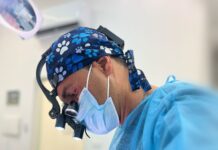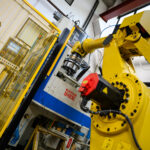Total hip replacement is one of the most successful and successful interventions in orthopedic surgery. Thanks to technological progress and scientific research, in recent years there has been on the one hand a significant improvement in surgical techniques, increasingly accurate and patient-sized, and on the other hand a significant evolution in the materials used to make orthopedic prostheses . And so, in response to the ever-increasing patient demand, minimally invasive surgery has been applied in recent years with extraordinary clinical results (reduced post-operative pain and rapid functional recovery) even in the orthopedic field. Today it is possible to implant a hip prosthesis without necessarily having to resort to high impact techniques, but more simply by using procedures that are more respectful of the anatomical integrity of the treated tissues. To illustrate the advantages of minimally invasive surgery in orthopedics are Dr. Daniele Patacconi and Dr. Roberto Lanzone of the Aurelia Hospital in Rome and N.O.C. of Ariccia (RM)
Dr. Patacconi, what does it mean in a specific mini-invasiveness?
Minimally invasive means operating bone or non-bone segments (for example cartilages, fibrocartilages, tendons or ligaments) without damaging the tissues that are not involved in the damage, thus causing the least possible insult to all healthy anatomical structures that must be crossed to reach that damaged. Following a multi-year and fruitful collaboration with dr. Etienne Peronne of Clermont Ferrand (FRA), Dr. Lanzone and I have devised a minimally invasive technique that allows a hip prosthesis to be implanted through an incision of only 5-7 cm, without any muscular section and resulting in a negligible blood loss. The by now proven mininvasive anterior approach is able to ensure excellent functional results to an ever increasing number of patients.
Dr. Lanzone, what advantages does this technique bring to patients?
It offers a series of numerous advantages: Respect for periarticular structures (Muscles, Nerves, Vases); reduction of blood loss; less post-operative pain; short hospital stay and recovery of functionality in a short time. The fast-track re-education path allows a rapid return to normal daily and sports activities; goal much sought after by increasingly younger, demanding and eager patients who want to resume their lifestyle as soon as possible.
For more info: www.newhip.it drpatacconi@gmail.com roberto.lanzone@gmail.com






















































